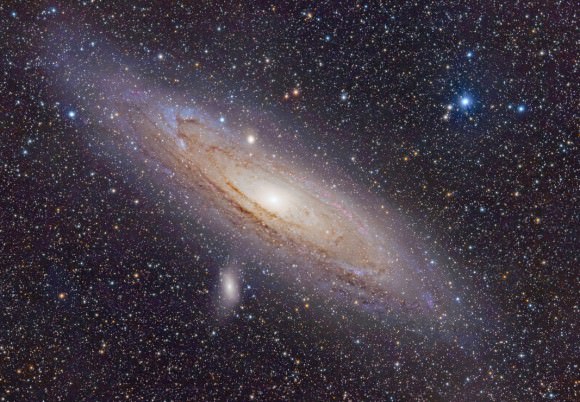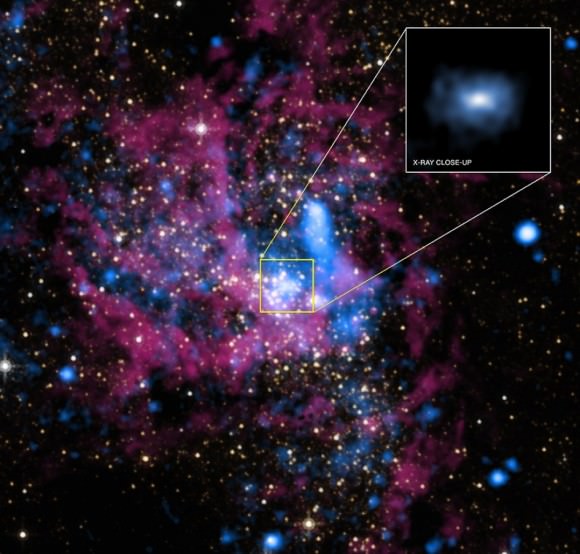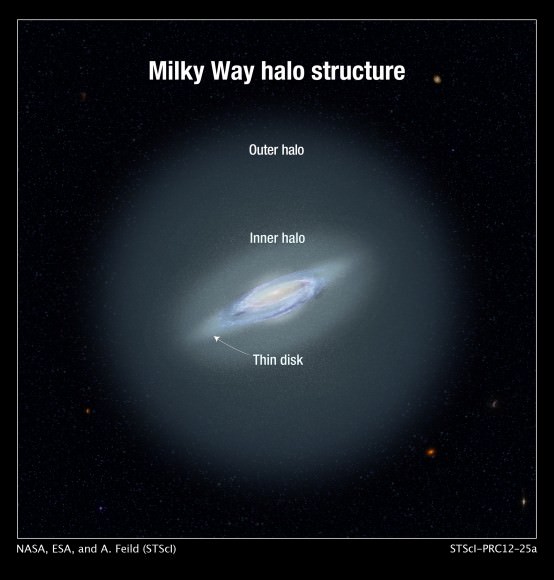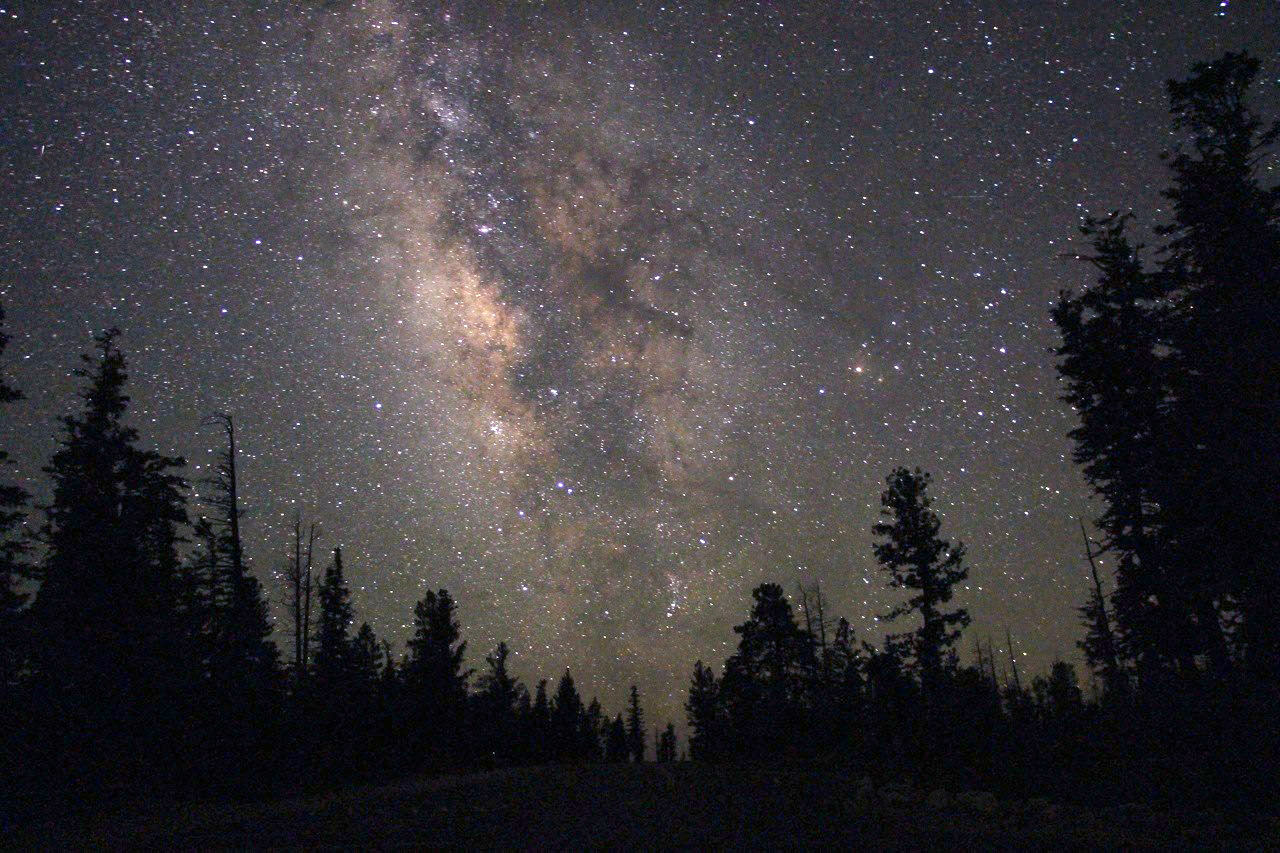The Milky Way is our home galaxy, the spot where the Earth resides. We are not anywhere near the center — NASA says we’re roughly 165 quadrillion miles from the galaxy’s black hole, for example — which demonstrates just how darn big the galaxy is. So how big is it, and how does it measure up with other neighborhood residents?
The numbers are pretty astounding. NASA estimates the galaxy at 100,000 light-years across. Since one light year is about 9.5 x 1012km, so the diameter of the Milky Way galaxy is about 9.5 x 1017 km in diameter. The thickness of the galaxy ranges depending on how close you are to the center, but it’s tens of thousands of light-years across.
Our galaxy is part of a collection known as the Local Group. Because some of these galaxies are prominent in our sky, the names tend to be familiar. The Milky Way is on a collision course with the most massive member of the group, called M31 or the Andromeda Galaxy. The Milky Way is the second-largest member, with M33 (the Triangulum Galaxy) the third-largest, NASA says. Andromeda appears much brighter in the night sky due to its size and relatively closer distance. There are about 30 members of this group.

Because we are inside the Milky Way’s arms, it appears as a band of stars (or a fuzzy white band) across the Earth’s sky. Casting a pair of binoculars or a telescope across it shows a mix of lighter areas and darker areas; the darker areas are dust that obscures any light from stars, galaxies and other bright objects behind it. From the outside, however, astronomers say the Milky Way is a barred spiral galaxy — a galaxy that has a band of stars across its center as well as the spiral shape.
If you’re looking for the center of the galaxy, gaze at the constellation Sagittarius, which is low on the summer sky horizon for most northern hemisphere residents. The constellation contains a massive radio source known as Sagittarius A*. Astronomers using the Chandra space telescope discovered why this supermassive black hole is relatively weak in X-rays: it’s because hot gas is being pulled inside the nebula, and most of it (99%) gets ejected and diffused.

Based on observing globular clusters (star clusters) in the galaxy, astronomers have estimated the Milky Way’s overall age at 13.5 billion years old — just 200 million years younger than the rest of the universe.
However, scientists are beginning to think that different parts of the galaxy formed at different times. In 2012, for example, astronomers led by Jason Kalirai of the Space Telescope Science Institute pinned down the age of the Milky Way’s inner halo of stars: 11.5 billion years old. They used white dwarfs, the burned-out remnants of Sun-like stars, to make that measurement.
Kalirai’s group’s research indicates that the Milky Way formed in the following sequence: the halo (including globular star clusters and dwarf galaxies), the inner halo (whose stars were born as a result of this construction) and the outer halo (created when the Milky Way ate up nearby ancient dwarf galaxies).

While we’ve been focusing on the parts of the galaxy that you can see, in reality most of its mass is made up of dark matter. NASA estimates that there is about 10 times the mass of dark matter than the visible matter in the universe. (Dark matter is a form of matter that we cannot sense with conventional telescopic instruments, except through its gravitational effect on other things such as galaxies. When masses gather in high enough concentrations, they can bend the light of other objects.)
We have written many articles about the Milky Way for Universe Today. Here’s an article about the rotation of Milky Way, and here are some facts about the Milky Way. We’ve also recorded an episode of Astronomy Cast about galaxies. Listen here, Episode 97: Galaxies.


“the Milky Way’s overall age at 13.5 billion years old — just two million years younger than the rest of the universe” – you probably mean “two HUNDRED million years” right?
Whenever life gets you down, Mrs.Brown
And things seem hard or tough
And people are stupid, obnoxious or daft
And you feel that you’ve had quite enough
Just remember that you’re standing on a planet that’s evolving
And revolving at nine hundred miles an hour
That’s orbiting at nineteen miles a second, so it’s reckoned
A sun that is the source of all our power
The sun and you and me and all the stars that we can see
Are moving at a million miles a day
In an outer spiral arm, at forty thousand miles an hour
Of the galaxy we call the ‘milky way’
Our galaxy itself contains a hundred billion stars
It’s a hundred thousand light years side to side
It bulges in the middle, sixteen thousand light years thick
But out by us, it’s just three thousand light years wide
We’re thirty thousand light years from galactic central point
We go ’round every two hundred million years
And our galaxy is only one of millions of billions
In this amazing and expanding universe
The universe itself keeps on expanding and expanding
In all of the directions it can whizz
As fast as it can go, the speed of light, you know
Twelve million miles a minute and that’s the fastest speed there is
So remember, when you’re feeling very small and insecure
How amazingly unlikely is your birth
And pray that there’s intelligent life somewhere up in space
‘Cause there’s bother all down here on Earth
http://youtu.be/buqtdpuZxvk